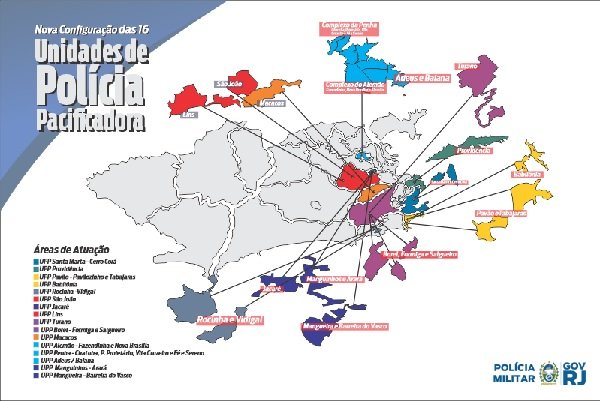On Tuesday (05/11), the Rio de Janeiro State Government officially announced the closure of 13 Pacifying Police Units (UPPs) in Rio de Janeiro city, under a new resolution signed by Colonel Marcelo Menezes, State Secretary of the Military Police. This measure is part of a broader restructuring strategy aimed at redistributing security forces more efficiently across the city.
This Content Is Only For Subscribers
To unlock this content, subscribe to INTERLIRA Reports.
Current Units
Currently, Rio de Janeiro has 29 UPPs, but with the new plan, the number of units will decrease while a new operational model takes shape. The restructuring plan will see human resources reallocated and UPP bases reformulated, ultimately reducing the units to 16. A significant part of the changes will affect the area covered by the 16th BPM (Olaria), which oversees security in the favelas of the Alemão and Penha complexes in the city’s North Zone. Presently, this battalion manages the largest number of UPPs in the state, with seven units, which will be reduced to two under the new plan. These remaining units will be positioned in strategic locations: one will cover the Alemão Complex, including Fazendinha, Nova Brasília, and Alemão, while the other will focus on the Penha Complex, covering Vila Cruzeiro, Chatuba, Parque Proletário, and Fé/Sereno.
Other Changes
Beyond the units in the 16th BPM, an additional 13 UPPs will undergo consolidation. In the South Zone, UPPs in Santa Marta (Botafogo) and Morro Cerro-Corá (Cosme Velho) will merge; as will those in Pavão-Pavãozinho and Tabajaras, both in Copacabana; and Rocinha (São Conrado) and Vidigal (Ipanema). In Greater Tijuca, Borel, Formiga, and Salgueiro will be unified, while Manguinhos and Arará (Benfica) and Mangueira (Centro) and Barreira do Vasco (São Cristóvão) will also combine. The UPP bases in Andaraí, located in the North Zone, and Morro dos Prazeres, in the Center, will be closed entirely.
Not the End of the UPPs
Officials from the State Public Security and Military Police Secretariats clarified that this restructuring does not signify the end of the UPPs nor a retreat of security forces in high-conflict areas. Rather, it is a recalibration of the program, which has not been updated in recent years. While the number of bases will be reduced, certain structural elements will be removed from the core of the communities, signifying a strategic shift rather than a complete withdrawal.
Merging of Units
Both Secretary of Security and Colonel Marcelo Menezes Nogueira, Secretary of the Military Police, underscored that this restructuring will release around 1,100 UPP officers for street patrol. Although reluctant to provide detailed information about the changes—citing concerns for unit security during the transition, Colonel Menezes noted that each of the 29 units underwent a thorough assessment, including community feedback from residents in affected areas.
Peak of the UPPs
According to the State Secretariat of Military Police, the UPP program reached its peak in 2013, with a force of approximately 12,000 officers. Today, only 4,996 officers remain in the program. The recent study on UPP deployment shows a decrease in the number of agents actively engaged in policing, while personnel dedicated to administrative tasks have remained the same. This restructuring aims to address this imbalance by reallocating resources to enhance public safety on the streets.
Analysis:
The decision to restructure the Pacifying Police Units (UPPs) in Rio de Janeiro, though officially framed as a resource optimization measure, underscores the State’s reluctance to acknowledge the program’s shortcomings. Originally launched to reclaim territories dominated by criminal factions and to provide security and citizenship to historically neglected communities, the UPPs received substantial financial and human investment. Yet, from midway through their implementation, signs of operational strain and resource depletion revealed significant limitations in the model. The current restructuring justification, citing a reduction in personnel, recycles a long-standing narrative the State has employed for years, sidestepping an official declaration of failure to avoid acknowledging a strategic miscalculation.
The most concerning aspect of this shift is the State’s emphasis on ostensive, short-term operations over sustainable, preventive community policing. By prioritizing sporadic interventions that offer only temporary crime control, without addressing the underlying social conditions within communities, the government signals a growing detachment from the actual security needs of the population. This approach not only falls short of the lasting safety the UPPs originally promised but also fosters distrust and fear within communities, further eroding the intended goals of pacification.




